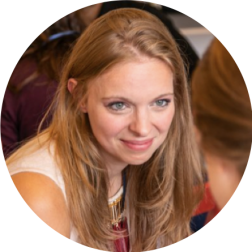A great read for all those who are fighting for something bigger than themselves. Published in Forbes.com.
Eighteen years after launching the South India AIDS Action Program (SIAAP), Shyamala Natarajan reached a crossroads. Positioned as a civil society movement, the organization had succeeded in proving their model. The more difficult, adaptive work of achieving a shift in policy had been completed, and the organization began to focus more on the delivery of services on scale. For Shyamala, the creative aspect of her work was complete, and although there was still work to be done, she began to question if she still wanted to be at the helm.
From our conversations with social entrepreneurs in the Ashoka network, we have seen several social entrepreneurs at this very juncture. With changing personal and professional circumstances, they begin to consider what it takes for their ideas to outlive themselves. This might happen early in the entrepreneurial journey, or a little later in their course. We spoke to several Ashoka Fellows who have had some success with this, and here we share common insights that may be of use for anyone looking to leave their organization with strength and stability.
Light many fires:
For many entrepreneurs, a first step is to transfer their ideas to a diverse set of people. Some of them might end up as the new CEOs of their organizations, while others might continue to take the idea forward in their own capacities. Seeding their ideas across different constituents, can keep the momentum going strong.
Nirmala Srinivisan, the founder of Action for Mental Illness (ACMI) India, worked with another social entrepreneur, Milesh Hamlai, to take the core idea of her work forward—advocacy for care-giver rights to be included in mental health policy. Milesh agreed to take a lead on this idea, and ensured that it doesn’t lose momentum.
Other social entrepreneurs, like Vikram Parchure, work on embedding their idea as a part of the system of governance in the country. They might work with different parts of the government to take an aspect of their model to scale.
Identifying a successor is only the first step towards a successful transition for an entrepreneur. Social entrepreneurs and business leaders alike need to use diverse strategies to ensure that there is no revolving door of CEOs once the founder departs.
Build a culture of co-creation:
Leading social entrepreneurs look for other leaders/entrepreneurs who can be visionaries, and are always on the look-out for other individuals with strong management skills to contribute. However, it is often difficult to find and recruit such individuals as they are usually living their own dreams.
For many social entrepreneurs, the process of co-creation—especially when embarked on from the beginning—helps in ensuring there is a consistently strong leadership team from start. For C.V. Madhukar, founder of PRS Legislature, the presence of his co-founder Madhavan was invaluable to the growth and success of his organization. Together, they fostered a culture of co-creation and intrapreneurship, building ownership of the team over the lifetime of the organization. The two challenged each other at different times, but also engaged with one another as peers[CP1] . Once the organization’s model had been proved, Madhukar decided to move on, aided partly by Madhavan’s unflagging enthusiasm to see PRS grow and continue on its journey.
Engage, don’t employ:
Building co-creation into the DNA of the organization can also help to cultivate a strong talent pool within the organization, from which the founder can draw a successor. Harish Hande, founder of SELCO and Magsaysay Award winner, ensures this by delegating the work of problem solving to diverse colleagues in the organization. From his chauffer to the local office staff, each employee has a growth trajectory and the opportunity to demonstrate their talents.
This tactic has yielded dramatic results. For instance, Harish’s current head of operations started at the lowest rung of the ladder—an office assistant in a rural SELCO office. Such a culture of engagement, as opposed to mere employment has ensured that all six of the original leaders at SELCO have moved on to pursue other passions, comfortable with the idea of the organization being run by its new home-grown leaders.
Institutionalize core values:
Building core values into the systems at the organization is one way to ensure that they outlast the transition. All too often, founders see a collapse of systems and processes on their departure, requiring them to come back and firefight.
When Shyamala Natrajan began planning her exit, she decided to embed integrity and trust into every system of the organization. Natrajan built a financial audit that focuses on handing over financial accountability to a team of people, rather than vesting it in one central authority figure. Using different levels of audits, the system begins with a peer audit within the organization occurring every three months. Internal auditors then look through the records at longer intervals before external auditors finally sign off.
The financial systems at SIAAP were so robust that they have repeatedly topped the European Union list of best NGO practices.
Be transparent:
Periods of transition are often fraught with doubt and stress, not just for the entrepreneur, but also for the whole team. In order to assure team-members that their opinions and interests will be reflected in the new management, outgoing executives ought to ensure that there is transparency in the selection process.
In 2009 when Rajendra Joshi, decided to identify his successor from within SAATH, he made it a point to involve all twelve senior members in the process. While he knew that not all of them would be considered as candidates, each one was put through an intense task-based process through which they could demonstrate their leadership skills and their personal visions —not just to the Founder but to themselves as well. Furthermore, Rajendra also insisted on involving people from the community they served, allowing them a decisive voice in the process.
Let go:
It requires immense mindset for the social entrepreneur to let go of the organization to the new leader. For many, it starts with building trust, and demonstrating it regularly to the new leader, and the team. Letting go involves both professional and personal transition.
Svati Bhogle, the founder of SustainTech, started by identifying areas of work critical for a new CEO to know such as accounts and administration and started handing these responsibilities over to her successor in a phased manner Doing so allowed the new CEO to slowly get her feet wet, and for Svati to build her confidence and trust in the new leader.
Letting go also requires significant personal transition. In order to avoid a professional empty-nest syndrome, it is important to not just consider an exit strategy, but to also ensure continued but differentiated engagement
Rajgopalan, the founder of TIDE, knew that he needed to continue to remain involved with the start-up and technology space in the country. After TIDE, he moved into academia, where he began teaching at Indian Institute of Information Technology, Bangalore. Here, he also set-up IITB Innovation Centre, which has become a hub for ICT research, innovation and enterprise in Bangalore.
Letting go of the organization after spending years building is not an easy process. It requires the entrepreneur to navigate deep and intense social commitment, community linkages and relationships that are difficult to transfer. To add further complexity, social entrepreneurs also have to disentangle the intricate relationship between their personal and the professional lives. While social entrepreneurs have seen opportunity in handing over the organization and model to the communities they work with, experiences in this regard have been sparse. Do write in with comments on your own experiences!
Sanjana Janardhanan works with the Fellowship team at Ashoka India, building knowledge and insights with Ashoka Fellows in India. Natya Tatineni contributed to the interviews.
Find the original article here.







